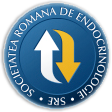
- Login
- Register
- Home/Current Issue
- About the journal
- Editorial board
- Online submission
- Instructions for authors
- Subscriptions
- Foundation Acta Endocrinologica
- Archive
- Contact
 Romanian Academy
Romanian Academy
 The Publishing House of the Romanian Academy
The Publishing House of the Romanian Academy

ACTA ENDOCRINOLOGICA (BUC)
The International Journal of Romanian Society of Endocrinology / Registered in 1938in Web of Science Master Journal List
Acta Endocrinologica(Bucharest) is live in PubMed Central
Journal Impact Factor - click here.

-
General Endocrinology
Erdem H, Canakci E, Kaya Y, Ozbilen M, Ankarali H
Relation of Apelin, Tumor Necrosis Factor Alpha and Claudin-5 to Body Mass Index in CholecystectomiesActa Endo (Buc) 2022 18(2): 156-163 doi: 10.4183/aeb.2022.156
AbstractObjective. The aim of this study was to investigate the relationship of Claudin-5, Apelin, Tumor Necrosis Factor Alpha (TNF-α) expression, and body mass index (BMI) of cholecystectomies. Materials and methods. Sixty-eight paraffin embedded cholecystectomy specimens diagnosed as chronic cholecystitis were collected in the Pathology Department of the Training and Research Hospital between 2015-2017. The samples were stained with Apelin, Claudin-5 and TNF-α. The immunohistochemical study was carried out using the system in an automatic staining machine. Results. There was a significant positive correlation between BMI and TNF-α staining (p=0.010). This result indicated that the degree of staining increased together with BMI. When age, BMI, and the other biochemical parameters were evaluated, a significant correlation was found between BMI and blood glucose only (p=0.029); correlations of BMI with the other parameters were not statistically significant. Conclusion. Although there is no relationship between inflammation and BMI with Claudin-5 and Apelin in this study, there is a significant relationship between BMI and TNF-α. -
Endocrine Care
Popa I, Brega D, Raica M, Dragan M, Alexa A, Bacanu R
Biological, morphological and ultrastructural correlations in child's obesityActa Endo (Buc) 2006 2(2): 163-185 doi: 10.4183/aeb.2006.163
AbstractIntroduction: Obesity, a disease whose morphological background has as main problem the “dysfunctional” adipocyte, continues to raise scientific interest for the completion of the existing data and the verification of the hypothetic ones. Material and method: We determined insulinemia and glycemia within the oral glucose tolerance test (OGTT), and we analyzed the relation between the fat mass and cortisolemia in a group of 50 obese patients aged between 4 months –18 years. In 19 obese patients, between 5 ½ -17 ½ years old, we determined the basal leptin and resistin serum levels, comparatively to a control group of 19 normal weight children. In 14 obese and 10 normal weight controls, we determined the number of androgenic and estrogenic adipocyte receptors, which we correlated with the degree of obesity, the Tanner stage and respectively the testosterone, progesterone and estradiol serum levels. We studied the cellularity, morphohistochemical and ultrastructural features of the adipose tissue in 42 obese and 20 normal weight controls. Leptin and resistin were determined by ELISA. The measurement of the fat mass was done by bioelectric impedance. For the study of the adipose tissue we took 1g of tissue from the retro-trochanterian area. We identified the estrogenic (ER) and androgenic (AR) receptors by LSAB2 technique. We interpreted the data statistically by the linear regression analysis and variance test “t” for two unequal parameters using Microsoft Excel 2002. Results: A positive correlation was demonstrated between glycemias and insulinemias for the entire group (r=0.927, p=0.002), as well as between cortisolemia and fat mass excess (r=0.917; p=0.001). Serum leptin levels were significantly high in the obese (mean values: 81.07 ng/ml) comparatively to normal weight individuals (mean values: 4.17 ng/ml). Resistin serum levels did not show significant differences between the obese and normal weight individuals. We cannot talk about the existence of any correlation between resistin and leptin. -
General Endocrinology
Kilinc F, Demircan F, Gozel N, Onalan E, Karatas A, Pekkolay Z, Ozdemir FA
Assessment of Serum Alarin Levels in Patients with Type 2 Diabetes MellitusActa Endo (Buc) 2020 16(2): 165-169 doi: 10.4183/aeb.2020.165
AbstractObjective. We aimed to investigate the potential relationship between plasma alarin levels and type 2 diabetes mellitus (T2DM). Patients and Method. We included 154 participants, divided into four groups in a cross-sectional study design. The first group includes patients with T2DM without complications (n=30), the second group patients with T2DM with microvascular complications (T2DMnoC n=32), the third group patients with T2DM with macrovascular complications, T2DM-MV (n=32) and the last group is the healthy control group (n=60). Results. In our study 94 patients were diabetic; 47 females and 47 males. The control group consists of 60 people, 30 women and 30 men. It was found that these had a significant (p>0.05) variation in serum alarin levels among the T2DM (T2DM-noC=3.1±0.7 ng/mL T2DMmV=2.8±0.4 ng/mL, T2DM-MV= 3.6±0.4 ng/mL) versus control group (15.6±2.6). We failed to find a significant variation of serum alarin levels (p>0.05) between T2DM subgroups. Serum alarin levels were significantly higher among control patients (p<0.05). There was no difference between diabetic sub-groups. Conclusion. We concluded that serum alarin levels in patients with T2DM are lower than in normal people. Further studies are needed to investigate the possible prognostic value of alarin in clinical practice in T2DM. -
Endocrine Care
Zahan AE, Watt T, Pascanu I, Rasmussen AK, Hegedüs L, Bonnema SJ, Feldt-Rasmussen U, Bjorner JB, Nadasan V, Boila A, Merlan I, Borda A
The Romanian Version of the Thyroid-Related Patient-Reported Outcomes Thypro and Thypro-39. Translation and Assessment of Reliability and Crosscultural ValidityActa Endo (Buc) 2018 14(2): 192-200 doi: 10.4183/aeb.2018.192
AbstractBackground. ThyPRO is a recently developed thyroid-specific quality of life (QoL) questionnaire applicable to patients with benign thyroid disorders(BTD). The aim of the present study was to translate ThyPRO and ThyPRO-39 into Romanian, and to evaluate reliability and cross-cultural validity. Methods. Standard methodology for translation and linguistic validation of patient-reported outcomes (PRO) was applied. The questionnaire was completed by 130 patients with benign thyroid diseases seen at Department of Endocrinology in the Emergency County Hospital, Tîrgu Mureș, Romania, between October 2015 and March 2016. Internal reliability of the Romanian version of the ThyPRO (ThyPROro) scales was assessed for multi-item scales using Cronbach’s alpha coefficient. An efficient method for testing cross-cultural validity is analysis of differential item functioning (DIF). Uniform DIF between the Romanian and the original Danish sample was investigated using ordinal logistic regression. The translation process proceeded without difficulties, and any disagreements were revised by one of the developers and the language coordinator. Results. Internal reliability for ThyPRO was satisfactory. Cronbach`s alpha coefficients for the 13 scales ranged from 0.78 to 0.93 for the ThyPROro and 0.78 to 0.87 for the ThyPROro-39. In the 85-item ThyPRO, nine instances of DIF were found. Most were minor, explaining <3% of the variation in scale score, but DIF in positively worded items were larger, with explained variance (R2’s) around 10-15%. Conclusion. The ThyPROro questionnaire is ready for assessment of health-related quality of life in Romanian patients with benign thyroid diseases. -
Endocrine Care
Korkmaz OP, Karayel B, Korkmaz M, Haliloglu O, Sahin S, Durcan E, Oren MM, Kadioglu P
Reliability of the Corticotropin Releasing Hormone Stimulation Test for Differentiating Between Acth Dependent and Independent Cushing SyndromeActa Endo (Buc) 2019 15(2): 195-202 doi: 10.4183/aeb.2019.195
AbstractContext. It is a challenge to determine the origin of Cushing syndrome (CS), especially in patients with low-normal adrenocorticotropic hormone (ACTH) concentrations. Objective. To evaluate the reliability of the corticotropin-releasing hormone (CRH) stimulation test in patients with CS whose origin of disease was not clearly identified using ACTH values, the high-dose dexamethasone suppression test (HDDST), and imaging in a single tertiary referral center. Design and Methods. Twenty-one patients with CS who were admitted to the endocrinology-metabolism clinic between 2004 and 2016 whose ACTH concentrations were 5-20 pg/mL and needed CRH stimulation test were retrospectively assessed. Results. Nine out of 21 patients were diagnosed as having Cushing’s disease (CD) and 12/21 had adrenal CS. The CRH stimulation test had a sensitivity and specificity of 100% and 8%, and positive and negative predictive values of 100% and 45% according to the current diagnostic criteria, respectively. An increase in ACTH ≥115% at 15 minutes and cortisol ≥86% at 60 minutes after CRH were associated with the highest likelihood ratio. The sensitivity and specificity of ACTH was 67% and 83% (AUC=0.75±0.12, 95% CI: [0.5-0.9]; p=0.03), and for cortisol it was 75% and 78% (AUC=0.71±0.15, 95% CI: [0.5-0.9]; p=0.03). Cortisol suppression of more than 64% from basal level in the HDDST suggested CD with the highest likelihood ratio. When these cut-off values were used together, both tests were negative in the patients with CD. Conclusion. The CRH stimulation test has low specificity to localize CS in patients with ACTH concentrations of 5-20 pg/mL according to the current diagnostic criteria. Different diagnostic criteria may be used in the CRH stimulation test and also in the HDDST in this group of patients. -
Case Report
Dogansen SC, Canbaz B, Canbaz B, Yarman S
Uncomplicated Pregnancy in a Patient with Cushing's DiseaseActa Endo (Buc) 2017 13(2): 215-219 doi: 10.4183/aeb.2017.215
AbstractThe coexistence of Cushing’s syndrome (CS) and pregnancy is uncommon due to the suppression of gonadotropin secretion in CS. Adrenocorticotropic hormone (ACTH) dependent CS in pregnancy is less frequent than adrenal causes. The diagnosis of CS during pregnancy is difficult since physiological changes in the hypothalamopituitary- adrenal axis may cause dynamic tests to be misinterpreted. Radiological imaging is limited. We report the case of a 27-year old woman with Cushing’s disease (CD) diagnosed in the 5th-week of pregnancy. The mild symptoms of hypercortisolism did not lead to serious complications for the mother or the fetus, so insulin was the only treatment used. The pregnancy was completed without any complications, and at 38 weeks of gestation a healthy female infant was delivered vaginally. Complications, such as hypocortisolemia and hypoglycemia, were not observed in the infant. Postpartum tests were consistent with CD. Contrast-enhanced pituitary magnetic resonance imaging revealed a microadenoma which was removed with transsphenoidal surgery. Histopathology revealed a pituitary adenoma with positive immunohistochemical staining for ACTH. Biochemical remission required prednisolone treatment, but the insulin requirement decreased significantly over time. As a conclusion, CD with mild features can be well tolerated during pregnancy, but the mother and the fetus must be monitored closely. -
Editorial
Gasparik A, Demian MB, Pascanu I
Romanian Translation and Validation of the SARC-F QuestionnaireActa Endo (Buc) 2020 16(2): 216-222 doi: 10.4183/aeb.2020.216
AbstractContext. Several studies have addressed the impact of sarcopenia on various health outcomes. As the most critical issue is the early identification of individuals, a short screening tool may help clinicians to simply test for sarcopenia and start early management of the disease. Recently, a simple questionnaire, Sarc-F was provided that may adequately realize this aim. Subjects and Methods. To validate the questionnaire we translated the original Sarc-F according to the recommended methodology. A total of 80 people, aged 65+ were evaluated for sarcopenia. Muscle mass, strength, and physical performance were measured. Volunteers completed the Sarc-F as well as other two questionnaires. Discriminative power, reliability, construct validity analyses, specificity, sensitivity, negative and positive predictive value evaluations were made. Results. A good discriminative power and internal consistency were found. With the functional sarcopenia diagnostic criteria the test demonstrates a high specificity (84%). The positive and negative predictive values were: 78% and 77%. Using the more conservative diagnostic criteria the negative predictive value was: 85.4%, sufficient to rule out those not at risk of having sarcopenia and eliminate the need for further investigations. Conclusions. A valid Romanian Sarc-F questionnaire is now available to simply detect patients at risk/no risk of sarcopenia. -
Case Report
Celik M, Ayturk S, Celik H, Can N, Kucukarda A, Sezer A, Guldiken S, Tugrul A
A Rare Clinical Presentation: A Patient with Chronic Renal Failure, Secondary Hyperparathyroidism and CalciphylaxisActa Endo (Buc) 2016 12(2): 219-223 doi: 10.4183/aeb.2016.219
AbstractCalciphylaxis, also known as calcific uremic arteriolopathy (CUA), is usually observed in women and it is a serious complication of hyperparathyroidism secondary to chronic renal failure. CUA is characterized by ischemic tissue loss secondary to progressive vascular degeneration. Although it is rare, it may end up with sepsis and organ failure and can be fatal. Its pathogenesis is not fully understood, but it is thought that it occurs secondary to increased calcification activators such as oxidized LDL, TNF- α, calcitriol, fibronectin, collagen-I, and TGF-1α. The most effective treatment is managing underlying pathology and decreasing serum calcium and phosphorus levels. In this report, we aimed to present an end stage renal failure case with coexisting hyperparathyroidism, hyperthyroidism and calciphylaxis in whom cutaneous manifestations were healed 6 months after parathyroidectomy. -
Endocrine Care
Sala DT, Muresan M, Voidazan S, Cvasciuc T, Darie R, Danielopol V, Muresan S, Pascanu I
First Day Serum Calcium And Parathyroid Hormone Levels as Predictive Factors for Safe Discharge after ThyroidectomyActa Endo (Buc) 2019 15(2): 225-230 doi: 10.4183/aeb.2019.225
AbstractContext. Permanent hypocalcemia is a rare but significant complication of thyroid surgery Objective. The aim of this study was to identify predictive factors of hypocalcemia and hypoparathyroidism after thyroidectomy . Design. Study included 134 total patients submitted to thyroidectomy from two endocrine units (January 2015 – August 2016). Methods. We measured total serum calcium (sCa) and intact PTH (iPTH) on postoperative day one and 1 month after surgery. Results. 118 patients were women with F/M ratio of 7.3/1 and a mean age of 51.8 years. 64 patients were included in group A (iPTH <12 pg/mL) and 70 patients in group B (iPTH >12 pg/mL). sCa and hypocalcemia symptoms were correlated with iPTH, measured 24 hours after surgery. The cut-off value was for sCa 8.05 mg/dL with a sensitivity of 85.29% and a specificity of 88.0% and for iPTH 11.2 pg/mL, with a sensitivity of 82.3% and a specificity of 71.0%. SCa (< 8.05 mg/dL) was a predictive factor with a 99 (IC95%:12.86- 761.58) and iPTH (<11.2 pg/mL) with a 10.77 higher risk (CI95%: 3.83-30.30) to be associated with symptoms. Conclusion. SCa and iPTH represent good predictive factors of early and safe hospital discharge and can predict the risk of prolonged and permanent hypoparathyroidism. -
Case Report
Coculescu M, Poiana N, Raducanu-Lichiardopol C, Ionescu M
Gonadoblastoma in a patient with 46XY gonadal dysgenesisActa Endo (Buc) 2006 2(2): 227-238 doi: 10.4183/aeb.2006.227
AbstractWe present a 18 year old phenotypic female patient who presented for primary amenorrhea. Pelvic ultrasound revealed a hypoplastic uterus and CT scan showed a hypoplastic right gonad and a left gonadal tumor with extrapelvic location. Karyotype was 46XY. Hormonal assessment indicated hypergonadotropic hypogonadism: FSH was 39.69 mUI/ml, estradiol was 28.07 pg/ml, testosterone was 0.17 ng/ml. DHEA level was high – 21 ng/ml. Gonadectomy was performed at 15 years and histologic examination diagnosed left gonadoblastoma and right teratoma in a dysgenetic gonad. The patient had a good postoperatory evolution. Menses were induced with estrogenic and then estroprogestogenic treatment. Plastic breast surgery was performed at 18 years. Establishing the genotypic sex in patients with primary amenorrhea represents a crucial step knowing that intersex disorders bearing Y chromosomal material have a high risk for gonadoblastoma and germ cell tumors.